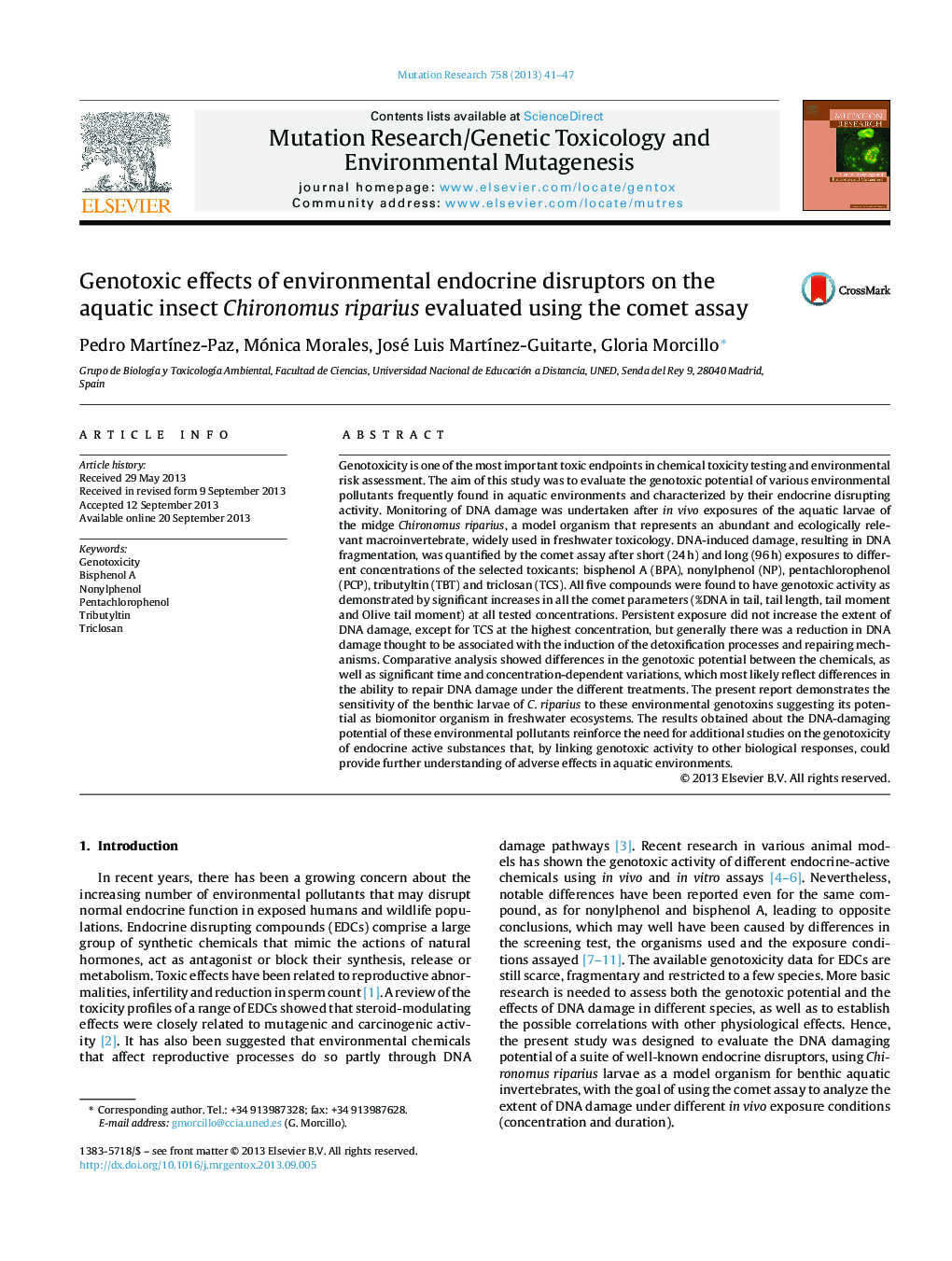| Article ID | Journal | Published Year | Pages | File Type |
|---|---|---|---|---|
| 2148018 | Mutation Research/Genetic Toxicology and Environmental Mutagenesis | 2013 | 7 Pages |
•The DNA damaging potential of endocrine disruptors was studied using the comet assay.•In vivo effects on Chironomus larvae, a benthic aquatic invertebrate, were evaluated.•Bisphenol A, nonylphenol, pentachlorophenol, tributyltin and triclosan are genotoxic.•All of them induced DNA breakage under short exposures at all the concentrations tested.•In general, the extent of DNA damage significantly decreased with prolonged exposures.
Genotoxicity is one of the most important toxic endpoints in chemical toxicity testing and environmental risk assessment. The aim of this study was to evaluate the genotoxic potential of various environmental pollutants frequently found in aquatic environments and characterized by their endocrine disrupting activity. Monitoring of DNA damage was undertaken after in vivo exposures of the aquatic larvae of the midge Chironomus riparius, a model organism that represents an abundant and ecologically relevant macroinvertebrate, widely used in freshwater toxicology. DNA-induced damage, resulting in DNA fragmentation, was quantified by the comet assay after short (24 h) and long (96 h) exposures to different concentrations of the selected toxicants: bisphenol A (BPA), nonylphenol (NP), pentachlorophenol (PCP), tributyltin (TBT) and triclosan (TCS). All five compounds were found to have genotoxic activity as demonstrated by significant increases in all the comet parameters (%DNA in tail, tail length, tail moment and Olive tail moment) at all tested concentrations. Persistent exposure did not increase the extent of DNA damage, except for TCS at the highest concentration, but generally there was a reduction in DNA damage thought to be associated with the induction of the detoxification processes and repairing mechanisms. Comparative analysis showed differences in the genotoxic potential between the chemicals, as well as significant time and concentration-dependent variations, which most likely reflect differences in the ability to repair DNA damage under the different treatments. The present report demonstrates the sensitivity of the benthic larvae of C. riparius to these environmental genotoxins suggesting its potential as biomonitor organism in freshwater ecosystems. The results obtained about the DNA-damaging potential of these environmental pollutants reinforce the need for additional studies on the genotoxicity of endocrine active substances that, by linking genotoxic activity to other biological responses, could provide further understanding of adverse effects in aquatic environments.
